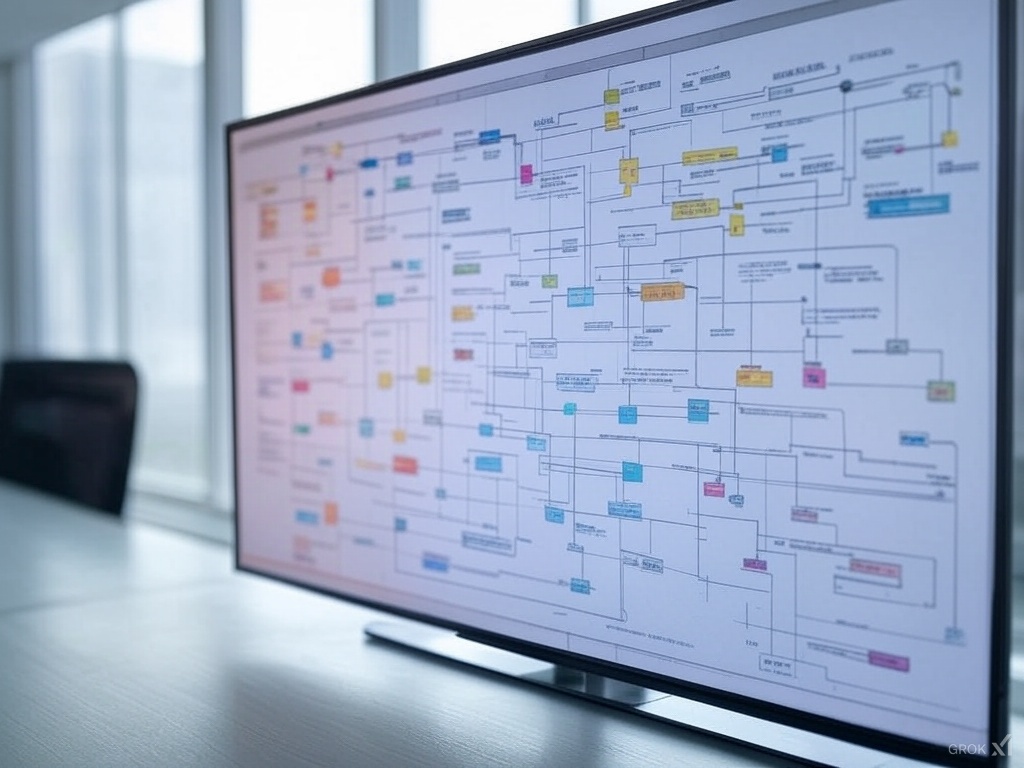
Artificial General Intelligence (AGI)
Artificial General Intelligence (AGI) is a theoretical form of AI that can understand, learn, and apply knowledge across various tasks at a human-like level, un...

An Application-Specific Integrated Circuit (ASIC) is a type of integrated circuit designed for specific tasks, offering high efficiency, reduced power consumption, and optimized performance. ASICs are vital in AI, automation, and cryptocurrency mining for processing efficiency.
An Application-Specific Integrated Circuit (ASIC) is a type of integrated circuit (IC) tailored for a particular use rather than for general-purpose applications like microprocessors or memory chips. ASICs are designed to perform specific tasks, offering high efficiency, reduced power consumption, and optimized performance. Unlike general-purpose ICs, which serve a broad range of applications, ASICs are custom-built to meet the unique demands of a specific application, such as digital voice recorders, advanced video codecs, or specialized functions in AI automation](https://www.flowhunt.io “Build AI tools and chatbots with FlowHunt’s no-code platform. Explore templates, components, and seamless automation. Book a demo today!”) and [chatbots. ASICs can be found in various forms, from simple logic gates to complex processors, and they are essential in devices that require efficient, high-speed processing.
The evolution of ASICs began in the 1960s when the electronics industry started to move beyond general-purpose integrated circuits. As electronic devices became more complex and specialized, the demand for application-focused ICs grew. The 1980s and 1990s marked significant advancements in ASIC technology, spurred by progress in semiconductor fabrication processes and the development of computer-aided design (CAD) tools. These advancements allowed engineers to design and fabricate ASICs with millions of transistors, enabling them to execute complex tasks with exceptional efficiency. Over the decades, ASICs have evolved into sophisticated components that are integral to modern electronic systems.
ASICs operate by executing specific functions that are hardwired into their design. The core of an ASIC consists of digital logic circuits composed of transistors, which act as the building blocks of the chip. These transistors are meticulously arranged to carry out predefined tasks. The design process involves defining the ASIC’s functions, synthesizing the digital circuits, and fabricating the chip on a silicon wafer. Unlike general-purpose processors, ASICs do not support reprogramming post-manufacture, making their design phase critical. The inflexibility in reprogramming is offset by the performance gains achieved through their highly specialized design.
ASICs are categorized into three primary types based on customization and design complexity:
Full Custom ASICs are entirely designed from scratch, allowing every aspect of the chip to be tailored to specific requirements. This approach maximizes performance and efficiency but requires significant time and resources. Full Custom ASICs are typically used in high-performance computing and applications where the high cost of design is justified by substantial performance gains.
Semi-Custom ASICs strike a balance between full customization and cost-effectiveness. They utilize pre-designed components, such as standard cells or gate arrays, which can be configured to achieve the desired functionality. This method reduces design time and costs while providing a reasonable degree of customization, making it a popular choice for many applications.
Programmable ASICs, or Field-Programmable Gate Arrays (FPGAs), are unique because they can be configured after manufacture. While not as optimized as Full Custom ASICs, FPGAs offer flexibility, allowing the same hardware to be reconfigured for different tasks. This adaptability makes them ideal for applications where requirements may change over time.
ASICs are prevalent across various sectors, including telecommunications, consumer electronics, automotive systems, and cryptocurrency mining. In AI and automation](https://www.flowhunt.io “Build AI tools and chatbots with FlowHunt’s no-code platform. Explore templates, components, and seamless automation. Book a demo today!”), ASICs are pivotal in processing large datasets and executing complex algorithms efficiently, making them integral to AI-driven technologies such as [chatbots and machine learning models. In cryptocurrency mining, ASICs are engineered to perform specific hashing algorithms, significantly outperforming general-purpose processors.
In AI applications, ASICs provide the necessary computational power for data processing and algorithm execution. They are crucial in developing AI systems that require real-time data analysis and decision-making capabilities. In AI automation and chatbots, ASICs enable fast data processing, enhancing the responsiveness and accuracy of AI models and systems.
An Application-Specific Integrated Circuit (ASIC) is a custom-designed chip optimized to perform specific tasks, offering greater efficiency and performance compared to general-purpose ICs.
ASICs are categorized as Full Custom ASICs, Semi-Custom ASICs, and Programmable ASICs (FPGAs), each varying in customization, flexibility, and cost.
ASICs are widely used in AI, automation, telecommunications, consumer electronics, automotive systems, and especially in cryptocurrency mining for high-speed processing.
ASICs offer high performance, low power consumption, compact size, cost efficiency in large volumes, and enhanced security due to their custom nature.
Leverage the power of ASICs and AI automation. Build smart chatbots and AI tools easily with FlowHunt's no-code platform.
Artificial General Intelligence (AGI) is a theoretical form of AI that can understand, learn, and apply knowledge across various tasks at a human-like level, un...
Discover how Agentic AI and multi-agent systems revolutionize workflow automation with autonomous decision-making, adaptability, and collaboration—driving effic...
Explore how AIOps combines artificial intelligence and automation to revolutionize IT operations, reduce downtime, and improve business agility. This comprehens...
Cookie Consent
We use cookies to enhance your browsing experience and analyze our traffic. See our privacy policy.

